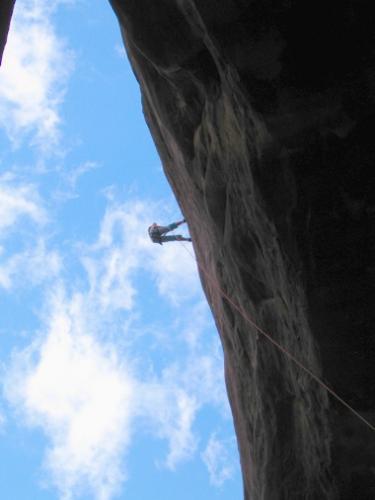Canyoneering and climbing would be permitted in Arches National Park in Utah under guidelines currently open for public comment.
The park has been studying what the impacts of rock climbing, canyoneering, and associated activities are and how the National Park Service should further manage those activities in a management plan. Issues identified include effects on natural and cultural resources and wilderness character, increase in use levels, the development of new routes, use of fixed gear, development of approach trails, rock alteration, visual impacts and the effects of climbinglcanyoneering on visitor safety and experiences.
The study evaluated three alternatives: a no·action alternative and two action alternatives. Alternative A (No Action) describes the current management of rock climbing and canyoneering in the park which is regulated under the authority of the Code of Federal Regulations. The CFR sets NPS-wide regulations and also delegates authority to park superintendents to make certain park decisions which are then described in the Superintendent's compendium.
Although the establishment of new routes is prohibited in this alternative, the levels of climbing and canyoneering use on existing routes would likely increase over time, while the impacts of increasing use levels on park resources and values would be unknown.
Alternative B (Preferred) proposes to manage climbing and canyoneering activities through group size limits and a permit system as well as other management strategies based on an assessment of current climbing and canyoneering uses and resource conditions. Monitoring data would be used to evaluate patterns in usage and resource conditions over time, and to determine the need for future actions to improve visitor experience and protection of park resources and values.
Alternative C proposes a minimum management approach. Management would emphasize educational efforts via the park website and social media, visitor center displays, and other methods to provide canyoneers and climbers with information on park resources, safety, and techniques to minimize resource impacts. Relatively little management emphasis would be placed on law enforcement and resource monitoring, although additional use restrictions could be imposed if determined necessary to protect park resources and values.
The study is now available for public review and comment at this site.
If a CD or a hardcopy of the document is preferred, you can contact Sabrina Henry at (435) 719-2135.
Comments on the plan are requested by July 9. Comments on this final stage of plan development can be documented on the PEPC website or can be mailed to Southeast Utah Group, Attn: Planning and Compliance Coordinator, 1181 S. W. Resource Blvd, Moab, Utah 84531.










Add comment